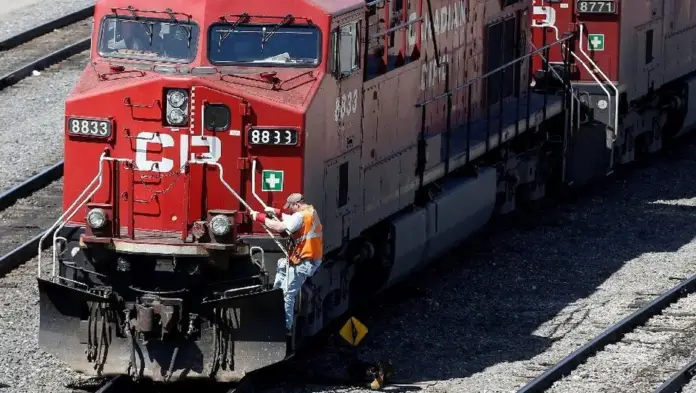
The Mexico City-Querétaro train will transport 2,000 passengers daily, according to the study carried out by Canadian Pacific Kansas City Mexico (CPKC) that was submitted to the government, a figure well below the 27,000 estimated by the government since 2013, according to specialists.
Analysts say that the company’s presentation has many holes and it even seems that they want to undermine its viability and “derail” it.
“Although CPKC reported that it has submitted to SICT a study on the feasibility of building this route, it is not a definitive project because it lacks sociological analysis and independent research on the demand that surprisingly estimates two thousand passengers daily, when the number of people who travel daily between Mexico City and Querétaro, measured by bus runs and toll payments by cars on the road, is substantially higher.”
The former general director of regulation of the Railway Transport Regulatory Agency (ARTF) also pointed out that in the last 30 years there were three attempts to deploy the new route for passengers, but they were stopped by technical problems, political pressures, controversies over the bidding process and even by concessionaires who influenced unfavorable decisions with the scoop that sharing the right of way could affect their cargo operations.
“The concessionaires do not want passenger trains so they always seek to minimize their viability; An example of this is the obstacles that they present on the Mexico-Querétaro route arguing that there is not sufficient demand,” he explained.
Rodríguez Pretein specified that another aspect that could explain the reluctance of the railway companies to provide passenger service is that an operation of this type requires that its infrastructure meet the minimum quality standards so as not to interfere with the trains that circulate in parallel and in this sense, ARTF statistics from recent years indicate that there have been a high number of derailments compared to their international counterparts, which suggests deficiencies in maintenance, particularly in the quality of the tracks.
“The implementation of passenger trains such as the Mexico-Querétaro train, even without using the same tracks, but using the right of way, would be at risk of suffering damage due to the lack of maintenance that prevents derailments due to the movement of the face, in addition to the fact that a deficient infrastructure forces the speed of the trains to be reduced,” he said.
Rodríguez Pretein stated that in view of this scenario, it is necessary for the ARTF, which is the technical arm of the government in railway matters, to make a statement about the new route and contribute its experience by publishing a diagnosis of the capacity of the most congested tracks that will help identify where to direct new investments in maintenance, allowing effective collaboration with the concessionaires, “because without information like this it is impossible to address any type of new project in a preventive manner.”
“The ARTF must guarantee that the concessionaires not only comply with the minimum standards for track maintenance, but also maintain a railway capacity prepared to absorb the increase in demand for the movement of goods and participate in new projects such as passenger trains,” he concluded.
Bad approach
Baldomero Garza García, president of the Mexicans in Germany cluster, considered that the CPKC study presented to SICT is badly focused because it gives an estimate of 2 thousand daily passengers with an average ticket cost of 800 pesos, which could mean that the intention is to “derail the project in order not to share the right of way.”
They say that sharing would imply guaranteeing a very safe operation given that a derailment in cargo could affect the passenger train that circulates on the other track, even with the appropriate distance and security.
“Safe operation will require improving the quality of the concessioned tracks, but it seems that there are no necessary investments and an example of this is that recently national media reported that 26 associations of the American agro-industry asked their government to demand that Mexico make a greater investment in the railway network to avoid interruptions in exports due to congestion and delays in agricultural shipments, he said.”
The attempts
The first attempt at building the Mexico-Querétaro intercity train took place during the Salinas de Gortari administration, when a line was built that never operated due to technical problems related to the rolling stock technology that was not adequate.
Later, on December 1, 2012, in his first speech as President of the Republic, Enrique Peña Nieto announced that the project of having a high-speed train to connect both cities would be resumed, for which he would issue instructions from the SCT for the preparation of the executive project and proceed with the bidding.
According to this project, the high-speed train would serve 27 thousand passengers a day, its construction would take 52 months and the expense would amount to more than 40 billion pesos; direct jobs were estimated at 20 thousand jobs and indirect jobs at 41 thousand.
Source: milenio






